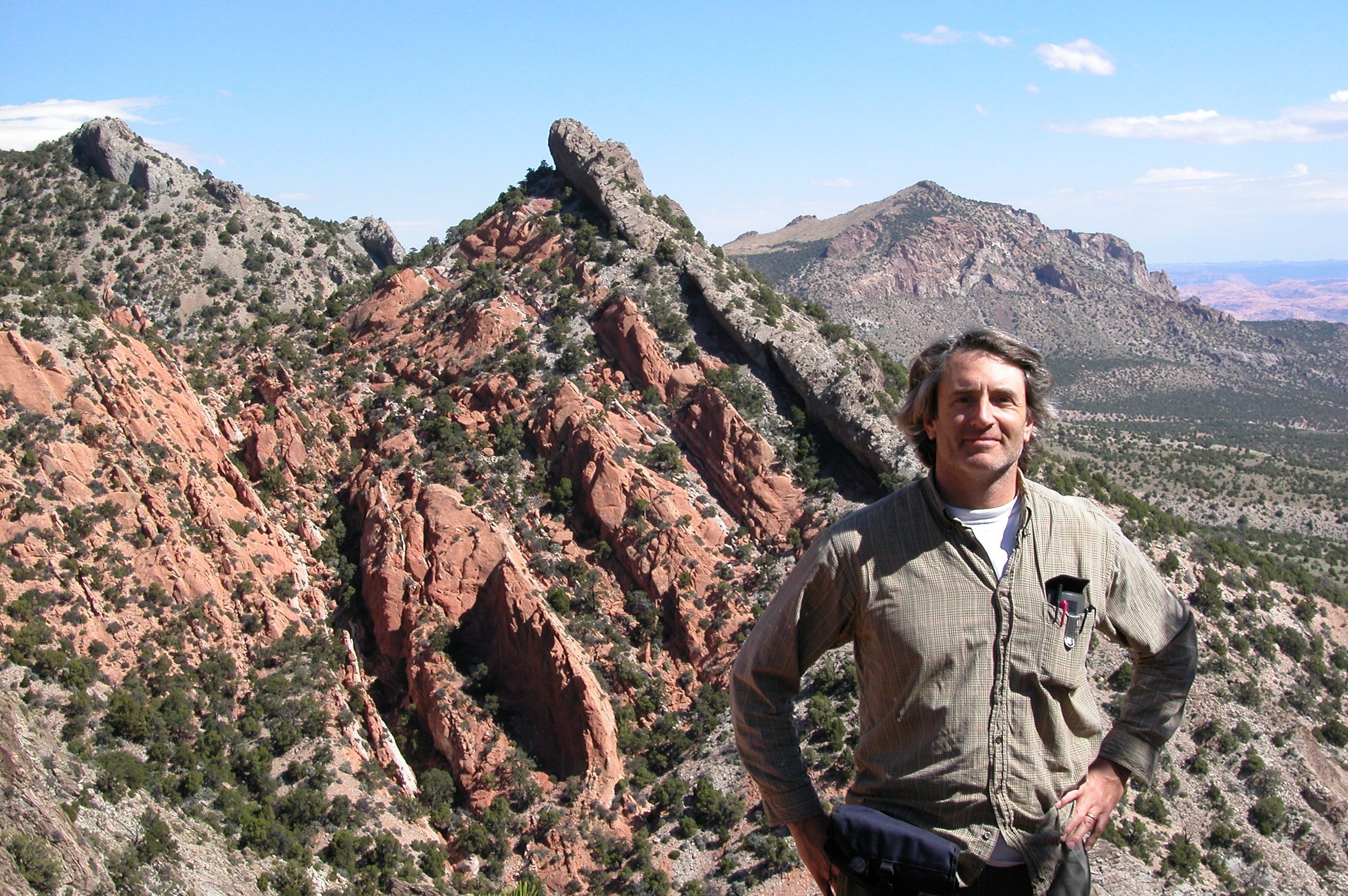
When volcanoes make the news, Sven Morgan gets excited just like a kid.
“Volcanoes are what turn a lot of kids on to science,” Morgan, professor and chair of geological and atmospheric sciences, said. “That’s exciting that I can relate what I do to things that are exciting to children.”
The currently active volcano on Kilauea, Hawaii, has been continuously and slowly erupting for 35 years and its recent increase in activity is making headlines. But many people may not be aware that far beneath the surface of continents are areas of solidified magma chambers, like graves of ancient volcanoes. These are what Morgan studies.
“We’re looking at the plumbing system down below the active system that fed the eruption,” he said. “Erosion has removed the top layers of the earth and we’re seeing these frozen systems preserved within the earth that were active 50-200 million years ago.”
Morgan studies ancient systems in southern Utah and eastern California by observing the flow directions through observation and magnetic techniques. When certain minerals are in the solidified magma, they will line up in the direction the magma flowed. He also looks at the surrounding rock. Because minerals are stable at different temperatures and pressures, this can give him an approximation of the temperatures and pressures that the magma used to be at based on observed mineral growth.
The data he collects helps him to reconstruct a picture of the characteristics of the magma chamber when it was active. The research relates to modern volcanoes, such as Mount St. Helens which is currently undergoing deformation of rock around magma chambers.
“In Mount St. Helens there’s a big crater at the top and new magma is pushing up into and deforming the top,” he said. “The top is rising upward and modern-day volcanologists have determined the pressures necessary to do that. They’re very similar to what I’m determining for magma pressures for my ancient systems.”
The sharing of data is part of a growing effort to link the study of ancient volcanoes to those active in the modern day.
“These are things that we have to understand in detail because when some of these go off, like Yellowstone, it’s going to be serious,” he said.
Yellowstone, said Morgan, is a “supervolcano” that goes off rarely but is due to go off again in the next 100,000 years. When it explodes, he said, it will send volcanic ash over more than half of the United States and could drop the global temperature, affecting crops worldwide.
But not all volcanic activity beneath the earth is so dangerous, like the cooled systems Morgan studies.
“All these igneous rocks are added to the crust at depth and that’s how the continents grow,” he said. “Most magma never makes it to the surface. It cools and crystallizes. Really what I’m studying is how continents grow.”
Magma from the Kilauea volcano has made it to the surface; it’s lava is made from molten ocean crust, which makes it runnier than a volcano on a continent, Morgan said.
This results in fewer explosions and more lava flows. The biggest danger for eruption in Kilauea comes from the dropping levels in the lava lake, which sits in the crater on top of the mountain. As the lava levels drop, the reduced heat levels allow water to seep into the crater. Then as lava levels rise again, they could hit the water, causing a sudden change in steam which quickly and drastically expands the volume, resulting in explosive activity.
“In the 1920s there was a major eruption; this exact event happened,” Morgan said. “It sent car-sized blocks about a mile away from the crater and killed some people. That’s what they’re worried about right now so they’re keeping people far away from the crater right now.”